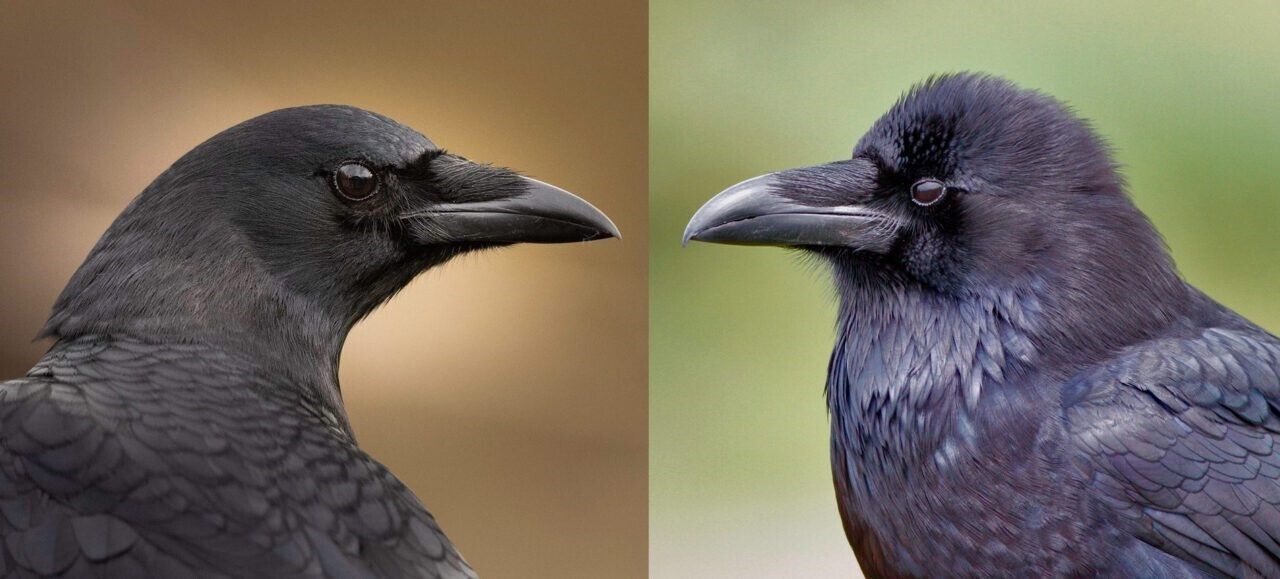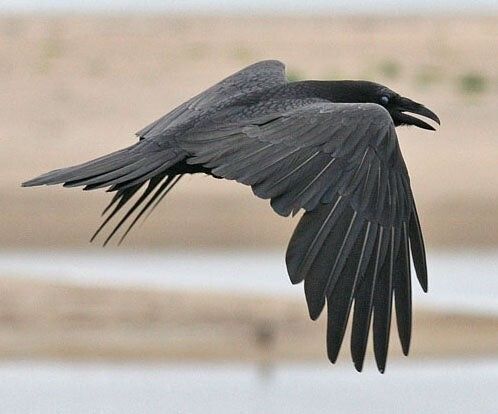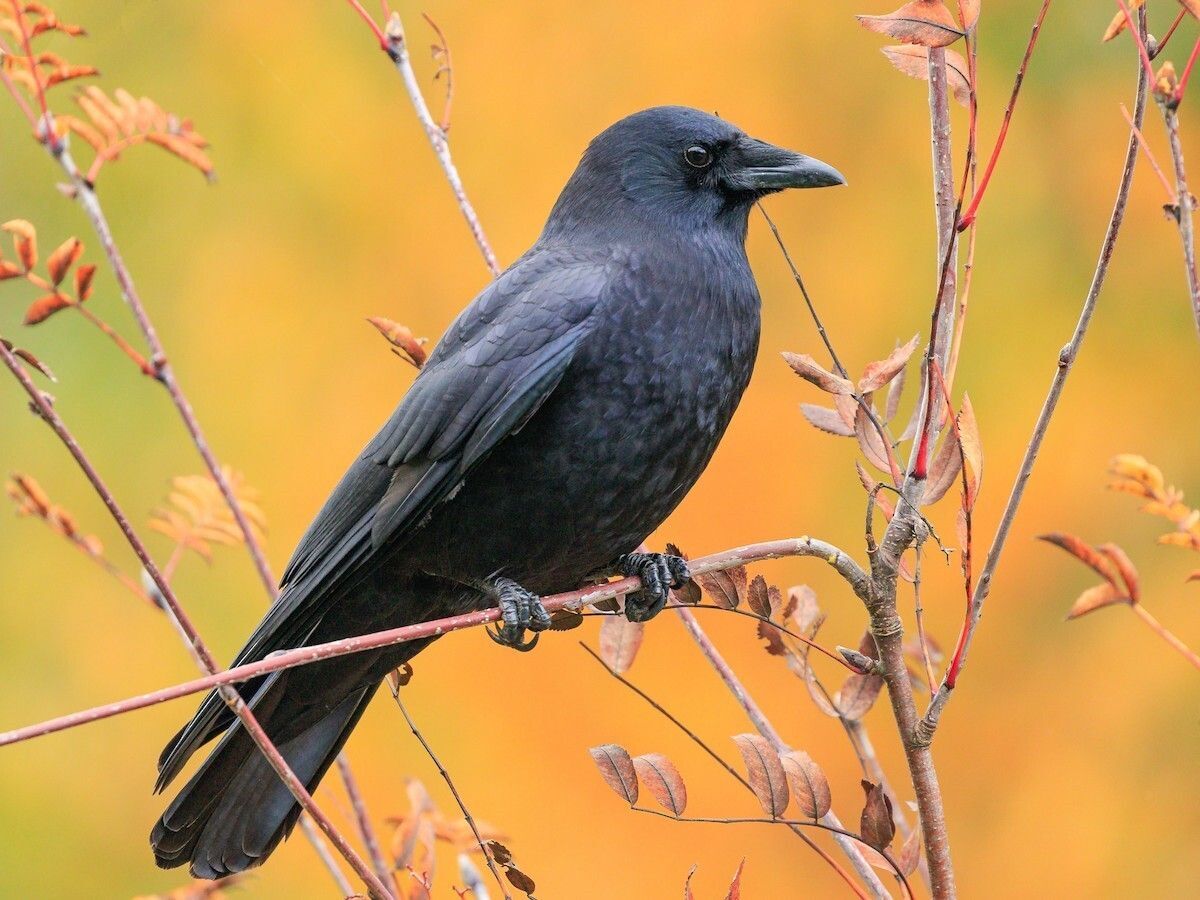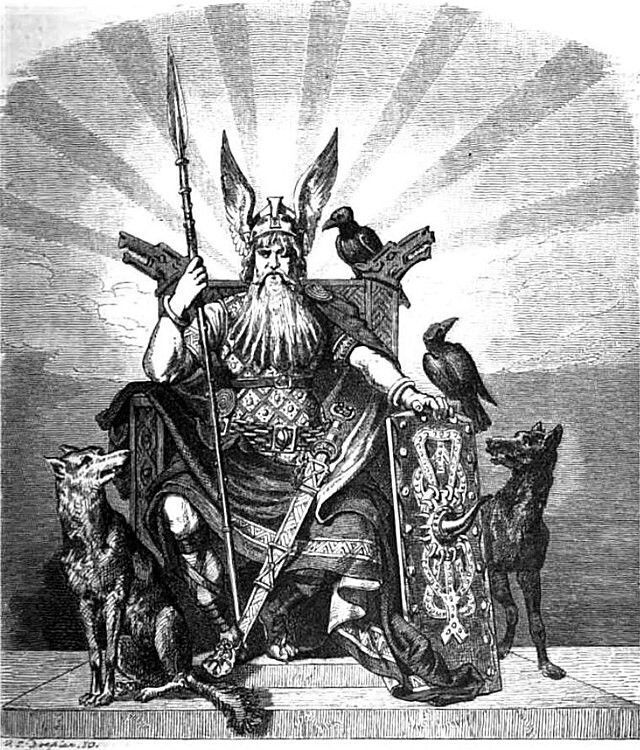Published October 31, 2024
Crows vs. Ravens: What’s the Difference Between these Halloween Icons?
By Camryn Sandbach, Audubon Intern
Halloween and the spooky season have no shortage of “creepy” animals to send crawling through the night—from owls to bats, black cats to spiders, or crows to ravens. But have you ever looked at those jet-black birds flying by and wondered how exactly the two are distinct when they look so alike?
Why is it when you think of ‘Halloween bird’, it’s the Raven or the Crow that comes to mind? Is it simply their ability to blend in with the night sky, to camouflage in the shadiest places to stalk their prey? Or was it the work of all the humans that came before us who saw either divinity or foreboding in their deep, dark gaze?
These captivating birds are both extraordinary in similar ways as well as their own; read along and discover for yourself if learning the facts will defer or enhance the mystery of these intelligent creatures.
Yes, they look alike, but look closer…
On the surface, it is quite easy to mistake one of these birds for the other. They both belong to the family of Corvids, which, by its most basic standards, sorts these birds by glossy plumage, loud song, and lack of sexual dimorphism (when the males and females look different). This is mostly where the similarities come to a halt.
Size is a major factor in putting a name to these birds. Ravens are quite large, they can be almost twice the size of the average American Crow. While a Crow can grow to be more than 20 inches long (already a frightening size for a winged being), a Raven can grow to nearly 30 inches long. A Raven’s wingspan can reach up to nearly 5 feet wide, while the Crow’s is about half this length, at 2.5 to 3 feet.
Want to see these Raven distinctions on your own? Visit Zachariah the Common Raven at the Bristol Audubon Education Center, and behold him for yourself!
Can’t see them well enough to tell, or can’t see them at all? While that may cause a shiver down your spine in fear of being watched by these black-cloaked animals, keep an ear out for their calls. Crows will sing a crisp caw into the air (the simplest one to remember out of a recorded 30+ different songs), and Ravens will sound much throatier with a call more akin to a croak. Are the sounds more chilling than the animals themselves? Only an encounter can make that decision.
They won’t dwell side by side.
While it is possible to see a Crow and a Raven occupy a similar setting, these birds choose to live in locations that are quite different from each other.
If you’ve ever had one of these birds cross your path while strolling through the neighborhood, it is most likely to be a Crow. Crows will nest and reside in urban, developed areas with a human population. Because of this, there is much recorded interaction between Crows and humans, whether that be a reward of a shiny object for human generosity, or sudden attacks from bird-held grudges, due to Crow’s highly intelligent facial recognition.
Ravens are found in less populated areas. These birds prefer to nest and roost in trees and forests. They will also be found in less inhabited land like mountain ranges, coastal habitats, and if it is the only environment present in their surroundings, they can even make the desert work to survive.
Will a Crow be your backyard best friend, or will you enjoy the woodland hike company of a Raven high in the trees?
Behave yourself, bird.
There is a gloriously exquisite creature within the Raven. Larger and darker than any other surrounding bird in the forest, these birds also rank close to the top in terms of intelligence in bird species. They have been known to understand the concept of a ‘tool’, and will use objects to assist themselves in the building of nests, or the opening of food. Young Ravens will also play with each other with objects such as sticks, flying over one another and dropping it, waiting for the other to catch it, and repeat.
Much like its counterpart, the Crow has also shown incredible signs of intelligence and interaction with humans. They have stunning facial recognition, and many have been recorded to reward humans for being kind to them or attack ones that have been aggressive. The fact that Crows will make more sounds than just caws is an attest to their own structure of language to other Crows, and that each of them mean something specific, a mystery to the ears of the human listener.
While Crows exhibit some fairly similar behavior to the Raven, one unique behavior they exhibit is what is known as ‘anting’. Crows will seek out anthills and stand on them, disturbing the colony and letting the small insects crawl up their legs and in between their feathers. The action itself is in an effort to ward off parasites on the bird, but the secret side effect is in the formic acid of the ant’s venom, which simulates the same effect as getting drunk.
Forever an icon of the skies.
With their differences and similarities down, have you come to a conclusion on how you feel about these birds flying above your head on a fall night? Do you feel doom or delight? Is there luck in your future, or a bad omen above? Perhaps finding out what those of the past thought of these birds will aid in your own thoughts on a sighting of one.
Think you’ve got it down, now?
Understanding the physical differences and sounds, as well as symbolism across cultures, hopefully now it is clear how mythical these birds can each be in their own right, despite sharing an appearance.
Remember this Halloween and fall season that even though they have a plethora of tales attached to them thanks to humans, these birds are still wild animals, and it’s best to view and study them from a distance. Care for your forest and fight deforestation to keep a home for our Raven friends and watch the road when driving through your neighborhood for a Crow swooping down for a roadkill snack. You don’t want the grudge of a Crow, and let’s hope no Raven comes rapping, tapping on your chamber door. Think you’ll forget all these facts now? Nevermore!





















